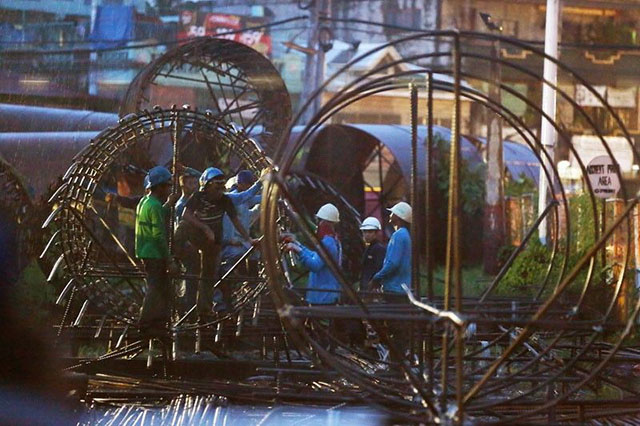
The opening of the world’s longest bridge that connects Hong Kong, China and Macau brought back to mind the Philippines’ plan to build similar infrastructure that would physically connect the major islands of the country.
The Hong Kong-Zhuhai-Macao Bridge was officially opened on October 24, Wednesday by Chinese President Xi Jinping in Zhuhai, a southern city on mainland China.
It is considered the “first major combined road and tunnel sea-crossing” that spans from an artificial island near the Hong Kong International Airport to Macau and then to China by Zhuhai, according to a press release by the Hong Kong Tourism Board.
The infrastructure is 55 kilometers long, which is 20 times longer than the United States’ San Francisco Bridge. It is also expected to last for 120 years—considered 20 years longer than the lifespan of most major cross-sea bridges.

The bridge will cut the travel time from Hong Kong to mainland China from four hours to 45 minutes. It also aims to boost the tourism industry of China and its two special administrative regions.
However, Hong Kong residents have denounced the bridge’s construction, saying that it is a form of China’s increasing assertion over the former British colony.
Hong Kong is set to be fully governed by Beijing in 2047, ending its administrative arrangements that were granted and established by its British colonizers.
Meanwhile, the bridge’s opening has garnered reactions from Filipinos who hoped that a similar feat be done to the Philippines.
Philippines’ plan to connect major islands
The Duterte administration in 2017 revealed its ambitious “Build, Build, Build” program that aims to boost the country’s economic growth and ideally solve the urban concerns of traffic through high-impact infrastructure projects.
Under the initiative, a plan to connect Luzon, Visayas and Mindanao through 16 short and long-span bridges have been discussed and laid out in the hopes of further creating more employment opportunities outside Metro Manila.
The whole infrastructure project would span from Bataan in Luzon to Tawi-Tawi in Mindanao.
Finance Secretary Carlos Dominguez said that it “will provide growth corridors and ensure that no major island in the Visayas will be left behind.”
The following are the planned bridges to be built with the approval of the National Economic and Development Authority’s Investment Coordination Committee:
- Bataan-Cavite Interlink Bridge (28 kilometers);
- Mindoro-Batangas Super Bridge (15 kilometers);
- Camarines-Catanduanes Friendship Bridge (10.7 kilometers);
- Luzon (Sorsogon)-Samar Link Bridge (18.2 kilometers);
- Panay-Guimaras-Negros Link Bridge (19.2 kilometers);
- 4th Mandaue-Mactan Bridge (0.42 kilometer);
- Cebu-Bohol Link Bridge (24.5 kilometers);
- Bohol-Leyte Link Bridge (22 kilometers);
- Leyte-Surigao Link Bridge (23 kilometers);
- Negros-Cebu Link Bridge (5.5 kilometers);
- Panguil Bay Bridge (3.77 kilometers);
- Guicam Bridge (0.44 kilometer);
- Davao-Samal Bridge (4.4 kilometers);
- Three Tawi-Tawi Bridges (0.78 kilometer)
Dominguez noted that the government would create road networks across Visayas to further complement the bridges.

Finance Secretary Carlos Dominguez said the bridges, which are part of the government’s massive infrastructure program, aim to stimulate growth in the Visayas and create jobs outside Metro Manila. (The STAR/Miguel de Guzman)
According to Public Works and Highways Chief Mark Villar, the plans of each inter-island bridge are still being studied as of July 2018.
One of them, the Panguil Bay Bridge, is already set to start its construction by November and expected to be complete by October 2021.
Villar shared that financial aid from the international community would be greatly beneficial for the projects’ completion.
“Because of the technology of the bridges, kailangan natin ng cooperation sa ating mga neighbors kasi sila naman ang may experience in inter-island bridges,” he said.
The DPWH chief recalled San Juanico Bridge, the country’s longest bridge, and added, “Our longest bridge is two kilometers long, unlike ng mga (proposed) inter-island projects that reach as far as 20 kilometers, so kailangan talaga ng foreign technologies.”
According to NEDA Regional Director Bonifacio Uy, DPWH has already contracted Ove Arup & Partners Hong Kong Ltd. as of August to help conduct feasibility studies and detailed engineering designs for the bridge linking Luzon to Samar.









